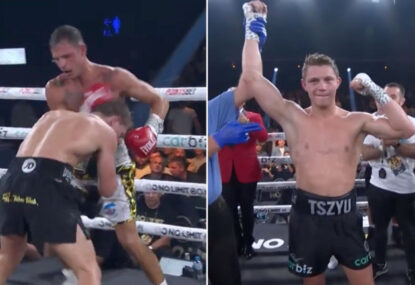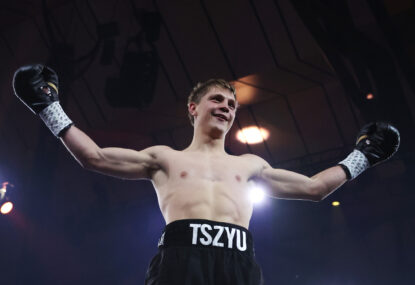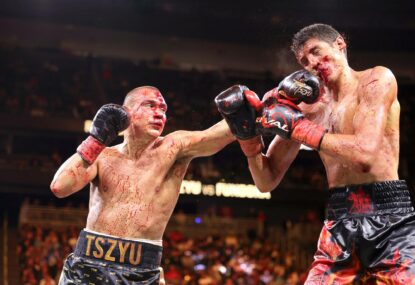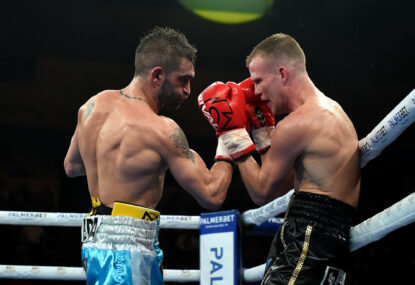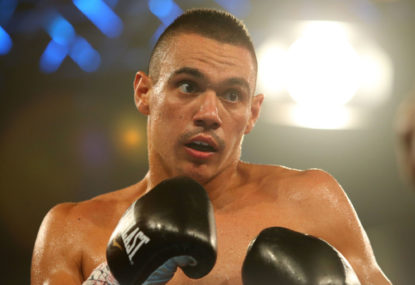‘On Tuesday, controversial former welterweight champion of the world Emile Griffith passed away, aged 75.’
For many news outlets, this short sentence will summarise the story of Emile Griffith’s life, and it will do it no justice.
The Emile Griffith story is one of great triumph and great sadness, and should make us reflect on what we ask of people who pursue a career in sport, and particularly boxing.
Emile Griffith, born on the third of February 1938, never dreamt of being a boxer. It was only as a young adult, working shirtless in a hat factory in his native New York that he was scouted, purely on the basis of his physique. But for this piece of chance, boxing history may have been entirely different.
That’s because, on March 24, 1962 at Madison Square Garden, Emile Griffith and Benny ‘Kid’ Paret touched gloves for the final time in a trilogy which had seen both hold the Welterweight Championship of the World, and which had grown more bitter with each fight.
Only one could come out of the fight with the title. As it eventuated, only would come out of the fight with his life.
The main source of the bitterness was an incident which had occurred at the weigh-in. Trash talk and weigh ins go hand in glove, but this was different.
Paret, calling on a rumour which had circulated about Griffith, called him a ‘maricon’, a Cuban perjorative for a homosexual.
Enraged, Griffith needed restraining, always a tantalising sign that the fighters have some personal animosity to ratchet up the brutality. In contemporary times of course this sort of thing is staged to have such an effect. This wasn’t staged.
We, the bloodthirsty public, expect boxers to enter into a bizarre double life. We demand they entertain us by being the most brutal, the most savage and the most devastating, but then expect them to switch off and comply to regular social standards of civility and decency once the rounds are over.
In the sixth round of their third fight, a sweet combination of blows from Paret knocked Griffith down, and his title bid would have been over only that he was saved by the bell.
When he returned to his corner, Griffith’s trainer gave him the following instructions: “When you go inside I want you to keep punching until Paret holds you or the referee breaks you! But you keep punching until he does that!”
Keep punching.
When Emile Griffith got Benny Paret up against the ropes in the twelfth round, he kept punching. Paret slumped but remained on his feet, leaning heavily on the ropes. Griffith kept punching. The footage, being beamed live across America by ABC, remains horrifying.
The punches keep landing, the life visibily ebbs from Paret’s body. 29 punches in a row, eighteen of them within the space of only six seconds.
Keep punching.
Benny Paret was taken from the canvas to hospital, where he would remain in a coma for ten days. On the third of April he died, aged 25.
This story is significant for so many reasons. Of course there were the sporting issues. This was after all the first time a fighter had died in the ring on national television, and it would lead to a reluctance on the part of networks to televise the sport, as well as a debate among politicians as to whether it could be sanctioned as a sport at all.
However the significance is deeper. Emile Griffith was a non-heterosexual athlete in the 1960s, and was taunted for it by his opponent.
It was not public knowledge. If it had been, Griffith would have been run out of town.
His death this week should bring us to reflect on whether we have really progressed that far on the question of homosexuality in sport and society more broadly.
It is inconceivable that every player in the National Rugby League, AFL or English Premier League is heterosexual, yet none are known publicly to be otherwise.
Fifty years on from Emile Griffith’s moment of temper at the weigh in, why do they not feel comfortable expressing themselves? In 1992 Emile Griffith was badly beaten leaving a New York City gay bar, and was hospitalised for four months, showing again how far our society has to come.
There is more. By 2005, when he was the subject of the quite brilliant documentary ‘Ring of Fire’, Griffith was quite obviously suffering from a condition which now, helpfully, has a name: Dementia Pugilistica. That is, impaired cognitive ability as a result of the repetitive trauma suffered by the head over a career as a professional boxer.
Emile Griffith had 85 professional fights. That this condition is now so common among boxers that it has it’s own name gives one pause for thought.
We ask boxers to be brutal, violent and ruthless. We expect them to be able to handle punshment equal to that which they dish out.
We also expect them, like other sportspeople, to be straight. If they’re not, our society hints that they’d be best served keeping it quiet.
There are many, like Mike Tyson, who struggle to fluctuate freely between brute and citizen. There are others, like Muhammad Ali, who pay now for punches absorbed decades ago.
There have been some, like Emile Griffith, who we expected to do all of this at once, while at the same time hiding a part of themselves.
His death this week is a sadness, but it should make us reflect on what we demand of our athletes, and whether our society is really as evolved as we like to think.






























































































